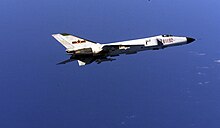Gu Songfen
Gu Songfen | |||||||
|---|---|---|---|---|---|---|---|
Cố tụng phân | |||||||
| Member of the Standing Committee of the8thand9th National People's Congress | |||||||
| In office March 1993 – March 2003 | |||||||
| Chairman | Qiao Shi Li Peng | ||||||
| Delegate to the6thand7th National People's Congress | |||||||
| In office June 1983 – March 1993 | |||||||
| Chairman | Peng Zhen Wan Li | ||||||
| Personal details | |||||||
| Born | 4 February 1930 Suzhou,Jiangsu,Republic of China | ||||||
| Political party | Chinese Communist Party | ||||||
| Alma mater | Chiao Tung University | ||||||
| Scientific career | |||||||
| Fields | Aircraft design | ||||||
| Institutions | Ministry of Astronautics Industry | ||||||
| Chinese name | |||||||
| Simplified Chinese | CốTụngPhân | ||||||
| Traditional Chinese | CốTụngPhân | ||||||
| |||||||
Gu Songfen(Chinese:Cố tụng phân;born 4 February 1930) is a Chineseaircraft designer.He participated in the design of theShenyang JJ-1,China's first jet trainer. He was the chief designer of theShenyang J-8andJ-8II,China's first high-speed, high-altitudeinterceptorfighter jets.He served as vice president and chief designer of theShenyang Aircraft Design Instituteand is an academician of both theChinese Academy of Sciencesand theChinese Academy of Engineering.
Early life
[edit]
Gu was born 4 February 1930 inSuzhou,Jiangsu,Republic of China.[1]He is the youngest son of Gu Tinglong (Cố đình long), a well known sinologist and calligrapher. His given name "Songfen" comes from a passage of the 3rd-century treatiseWen fuwritten byLu Ji.[2]
In 1935, Gu Tinglong accepted a job at theYenching Universitylibrary, and moved the family toBeijing.Two years later, theSecond Sino-Japanese Warbroke out and Japanese warplanes bombed the Xiyuan Barracks of the Chinese 29th Army on 28 July 1937. As the Gu family lived near the barracks, their house was shaken by the explosions.[2][3]Songfen recalled watching the bombs fall out of the planes, before adults urged him to hide under the dining table. He attributes this experience as the main reason he decided to become an aircraft designer.[2][3]
To escape Japanese occupation, in 1938 Gu Tinglong moved the family to theShanghai French Concession,where he helped establish the United Library (Hợp chúng thư viện). After the end of the war, Songfen graduated from high school in 1947 and enteredNational Chiao Tung University, Shanghaito studyaeronautical engineering.[2][3]
Early career: the Shenyang JJ-1
[edit]
Gu graduated from university in 1951, and was assigned to work for the newly established Aviation Industry Bureau of the Ministry of Heavy Industry, under China's top aircraft designersXu ShunshouandHuang Zhiqian.[2]The People's Republic of China (PRC), which had just been founded two years earlier, was still establishing its aviation industry, and in the early years Gu mostly worked on servicing Soviet-made aircraft.[2]
In August 1956, the Aviation Industry Bureau established the PRC's first airplane design office inShenyang,with Xu Shunshou as its director, Huang Zhiqian andYe Zhengdaas deputy directors. Gu, then 26 years old, was appointed head of theaerodynamicsgroup.[1][2]The office's first task was to design and build a jet trainer, theShenyang JJ-1.The plane took its first flight on 26 July 1958, which marked a new era of China's aviation industry.[2]
Chief Designer of the Shenyang J-8 and J-8II
[edit]
In October 1964, the Chinese government decided to design and build its first high-speed, high-altitudeinterceptorfighter jet,later named theShenyang J-8.Huang Zhiqian was appointed its chief designer, with Gu serving as his deputy. After Huang died in thePakistan International Airlines Flight 705crash in 1965, Gu succeeded him as chief designer.[2]The project was delayed by the outbreak of theCultural Revolution1966, but the J-8 completed its maiden flight on 5 July 1969, which is considered another milestone in the development of China's aviation industry.[2]In November 1985, the J-8 project won the Special Prize of theState Science and Technology Progress Award,and Gu was named as the first recipient.[2]

By 1977, Gu was chief designer and vice president of theShenyang Aircraft Design Institute(then called the 601 Institute). In May 1981, Gu was appointed Chief Designer of theShenyang J-8II,the next generation of the J-8 interceptor.[2]The first J-8II plane completed its maiden flight on 12 June 1984, and its design was finalized in 1988. In 2000, the J-8II won the First Prize of the State Science and Technology Progress Award.[2]
Administrative career and honours
[edit]Gu was transferred to Beijing in 1986 to serve as Deputy Director of the national government's Aviation Industry and Technology Commission. In this capacity, he participated in planning the future development of China's aviation industry. In June 2001, Gu,Wang Daheng,Shi Changxuand more than a dozen other scientists proposed the development of China's ownjetliner.The proposal was adopted by the Chinese government in 2007, and theComac C919took its maiden flight ten years later, on 5 May 2017.[2]
Gu was elected an academician of theChinese Academy of Sciencesin 1991, and of theChinese Academy of Engineeringin 1994. He won the 1995Ho Leung Ho Lee Prizefor Science and Technology Progress. He was elected a delegate to the 7th, 8th, and 9thNational People's Congress,and was a member of the Standing Committee of the9th National People's Congress.[4]
References
[edit]- ^ab"Gu Songfen - Distinguished Alumni".Shanghai Jiao Tong University.Retrieved2019-02-11.
- ^abcdefghijklmnChen Lei trần lỗi (2017-12-23)."Hai viện viện sĩ cố tụng phân: Liều mình nghiên cứu phát minh đầu giá trời cao cao tốc máy bay tiêm kích".China News.Retrieved2019-02-11.
- ^abcGuo Quanzhen quách tuyền thật (2018-08-31)."88 tuổi cố tụng phân nhớ niệm phụ thân cố đình Long gia phong rũ giáo".Jiefang Daily.Retrieved2019-02-11.
- ^"Biography of Gu Songfen".China Vitae.Retrieved2019-02-11.
- 1930 births
- Living people
- Chinese aircraft designers
- Delegates to the 7th National People's Congress
- Delegates to the 8th National People's Congress
- Delegates to the 9th National People's Congress
- Engineers from Jiangsu
- Members of the Chinese Academy of Sciences
- Members of the Chinese Academy of Engineering
- Scientists from Suzhou
- National Chiao Tung University (Shanghai) alumni
- Highest Science and Technology Award winners
